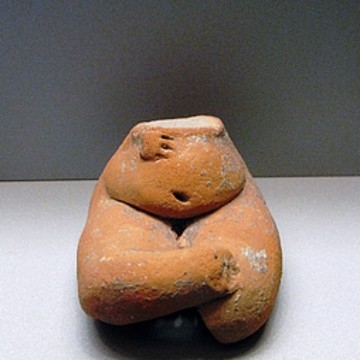Looking for design inspiration? Browse our curated collections!
Joined
2011
Followers
26
Visitors
463,177

Neolithic Coroplastic Art
Figurines, models of people and animals, shaped in clay or carved in stone and marble, are among Neolithic man"s most expressive creations. The female figure, standing or sitting, dominates in Helladic Neolithic coroplastic art, although male figures also exist. Male figurines standing or sitting, distinguished by the projecting phallus. With the sexual characteristic emphasized, the woman must have been for the Neolithic people an object of wonder concerning life and creation. The variety of postures, the rendering of features indicative of sex or phases of life (e.g. pregnancy) make them unique creations. From the Early Neolithic, 6800 BC, a naturalistic conception dominates. The female body is portrayed with anatomical details, but with a tendency to exaggerate the lower part of the body. The male figurines are distinguished by a projecting phallus. In Late Neolithic (5300-4500 BC) abstract schematization prevails, in which the human figure is a flat rectangular piece of clay or stone. The gender is not differentiated and these figures should be described as humanoid rather than human. Throughout the Final Neolithic (4500-3300 BC) the human form is to be seen in the ring-shaped objects which were worn as amulets, and the materials used to make them included gold, perhaps the first metal used by man. Also, white marble was used for making anthropomorphic figurines, considered the forerunners of the famous Cycladic figurines of the Bronze Age. The use of seals goes back to the Early Neolithic period (6800-5900 BC.) Seals were manufactured from clay or soft stone. Their seal base was circular, oval, square or rectangular and bore incised decorative motifs which were mainly geometric: zigzag lines, triangles, spirals, stepped patterns, meanders, concentric cycles, and cruciform patterns with additional stacked chevrons in the quadrants are encountered. The later were the forerunners to the seals of the Bronze-Age. The use of seals in the farming and stock-rearing communities of the Neolithic should be associated with the economy and the structure of Neolithic society to declare ownership. Artifacts are displayed in National Archeological Museum Athens, Benaki, Cycladic Museum of Athens and Museum of Dion